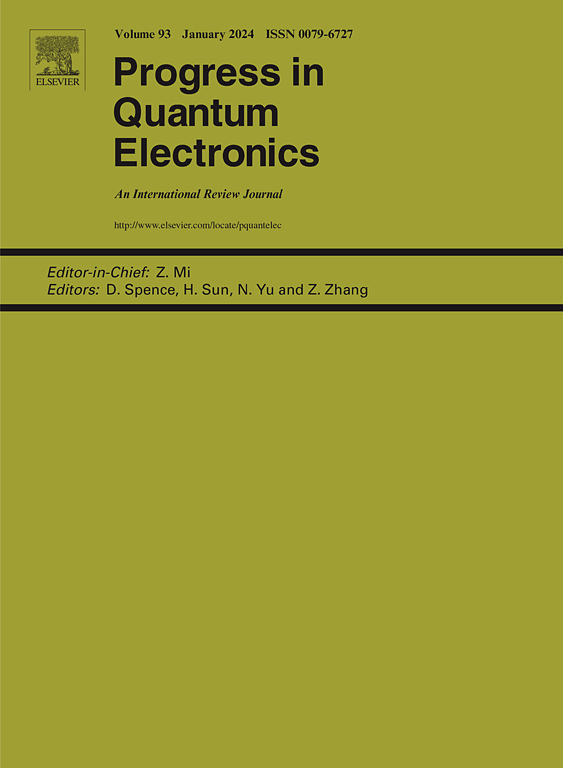III-nitride semiconductor membrane electronics and optoelectronics for heterogeneous integration
IF 12.5
1区 物理与天体物理
Q1 ENGINEERING, ELECTRICAL & ELECTRONIC
引用次数: 0
Abstract
The rapidly developing III-nitrides materials and devices technologies are driving the advancements in hybrid heterogeneous structures for multi-material and multifunctional electronic or optoelectronic integrated systems. Beyond heteroepitaxial growth, the process integrations of freestanding thin-film devices open up more possibilities for high levels of integration and multi-functionalization applications, overcoming the limitations of epitaxial substrate materials. Benefiting from the abundant and exceptional electrical and photoelectrical properties of III-nitrides, the heterogeneous integration of thin-film devices significantly enhances the functional capabilities in the fields of on-chip optical communication, micro-LED display, and flexible sensing. In this review, we present a comprehensive overview of freestanding thin-film device fabrication technology and its integration strategies. We discuss the characteristics of both conventional and advanced III-nitride epilayer transfer technologies, focusing on lift-off, transfer, bonding, and integration process. Promising applications are summarized based on the integration technology of transferable III-nitride thin-film devices. Additionally, we analyze the remaining challenges in manufacturing and application of III-nitride thin-film devices for advanced heterogeneous integrations. The further development of these technologies will promote the research of III-nitrides in pioneering fields, including high-speed photoelectric integrated communication system, cost-effective Micro-LED display and reliable biosensing applications.
用于异质集成的 III 族氮化物半导体膜电子学和光电子学
快速发展的Ⅲ-氮化物材料和器件技术正在推动用于多材料和多功能电子或光电集成系统的混合异质结构的进步。除了异质外延生长,独立薄膜器件的工艺集成为高集成度和多功能化应用提供了更多可能性,克服了外延基底材料的局限性。得益于Ⅲ-氮化物丰富而优异的电学和光电特性,薄膜器件的异质集成大大增强了片上光通信、微型 LED 显示和柔性传感领域的功能。在这篇综述中,我们全面介绍了独立薄膜器件制造技术及其集成策略。我们讨论了传统和先进的 III 族氮化物外延层转移技术的特点,重点关注升离、转移、键合和集成过程。根据可转移 III 族氮化物薄膜器件的集成技术,总结了具有前景的应用。此外,我们还分析了用于先进异质集成的 III 族氮化物薄膜器件在制造和应用方面仍然面临的挑战。这些技术的进一步发展将推动 III 族氮化物在高速光电集成通信系统、高性价比 Micro-LED 显示屏和可靠的生物传感应用等先驱领域的研究。
本文章由计算机程序翻译,如有差异,请以英文原文为准。
求助全文
约1分钟内获得全文
求助全文
来源期刊

Progress in Quantum Electronics
工程技术-工程:电子与电气
CiteScore
18.50
自引率
0.00%
发文量
23
审稿时长
150 days
期刊介绍:
Progress in Quantum Electronics, established in 1969, is an esteemed international review journal dedicated to sharing cutting-edge topics in quantum electronics and its applications. The journal disseminates papers covering theoretical and experimental aspects of contemporary research, including advances in physics, technology, and engineering relevant to quantum electronics. It also encourages interdisciplinary research, welcoming papers that contribute new knowledge in areas such as bio and nano-related work.
 求助内容:
求助内容: 应助结果提醒方式:
应助结果提醒方式:


